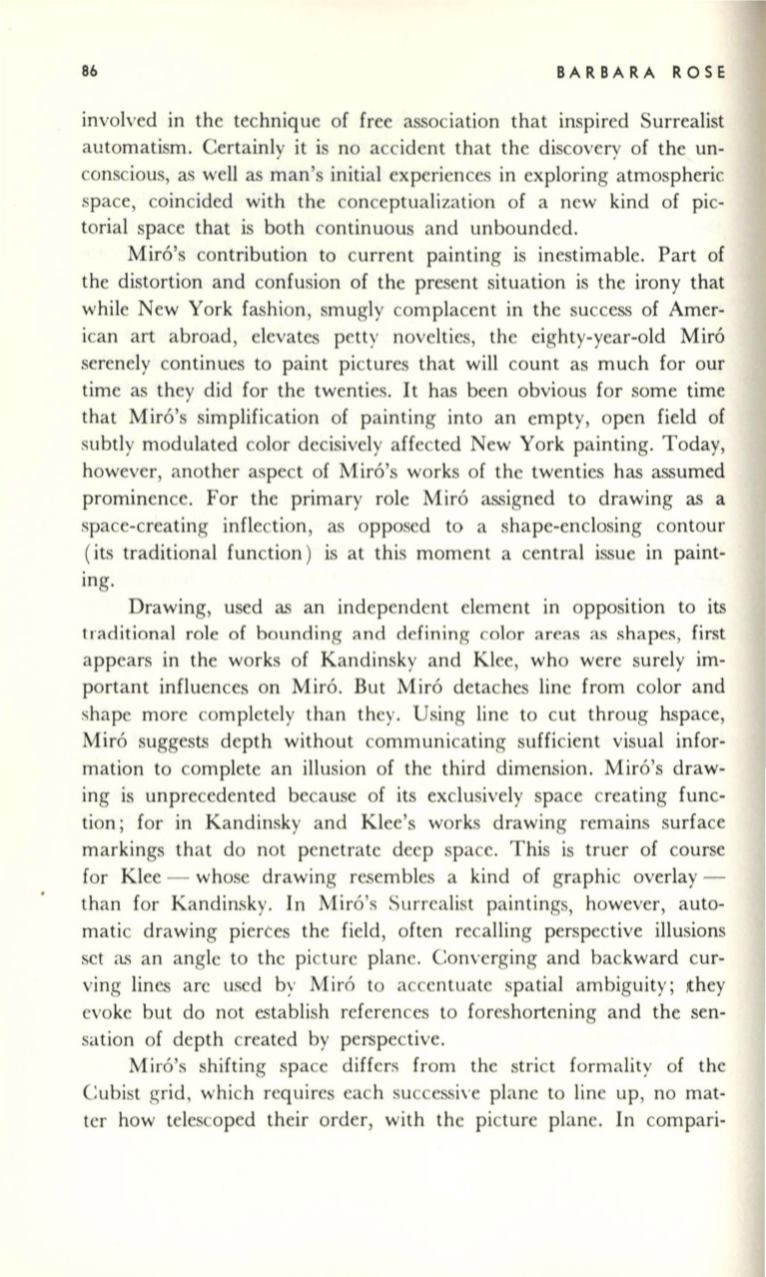
86
BARBARA ROSE
involved in the technique of free aSSOCIatIOn that inspired Surrealist
automatism. Certainly it is no accident that the discovery of the un–
conscious, as well as man's initial experiences in exploring atmospheric
space, coincided with the conceptualization of a new kind of pic–
torial space that is both continuous and unbounded.
Miro's contribution to current painting is inestimable. Part of
the distortion and confusion of the present situation is the irony that
while New York fashion, smugly complacent in the success of Amer–
ican art abroad, elevates petty novelties, the eighty-year-old Miro
serenely continues to paint pictures that will count as much for our
time as they did for the twenties. It has been obvious for some time
that Miro's simplification of painting into an empty, open field of
subtly modulated color decisively affected New York painting. Today,
however, another aspect of Miro's works of the twenties has assumed
prominence. For the primary role Miro assigned to drawing as a
space-creating inflection, as opposed to a shape-enclosing contour
(its traditional function) is at this moment a central issue in paint–
mg.
Drawing, used as an independent element in opposition to its
traditional role of bounding and defining color areas as shapes, first
appears in the works of Kandinsky and Klee, who were surely im–
portant influences on Miro. But Miro detaches line from color and
shape more completely than they. Using line to cut throug hspace,
Miro suggests depth without communicating sufficient visual infor–
mation to complete an illusion of the third dimension. Miro's draw–
ing is unprecedented because of its exclusively space creating fun c–
tion; for in Kandinsky and Klee's works drawing remains surface
markings that do not penetrate deep space. This is truer of course
for Klee - whose drawing resembles a kind of graphic overlay–
than for Kandinsky. In Miro's Surrealist paintings, however, auto–
matic drawing piertes the field, often recalling perspective illusions
set as an angle to the picture plane. Converging and backward cur–
ving lines are used by Miro to accentuate spatial ambiguity; !they
evoke but do not establish references to foreshortening and the sen–
sation of depth created by perspective.
Miro's shifting space differs from the strict formality of the
Cubist grid, which requires each successi\'e plane to line up, no mat–
ter how telescoped their order, with the picture plane. In compari-


